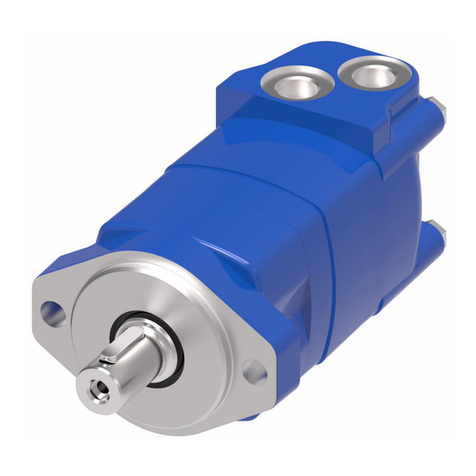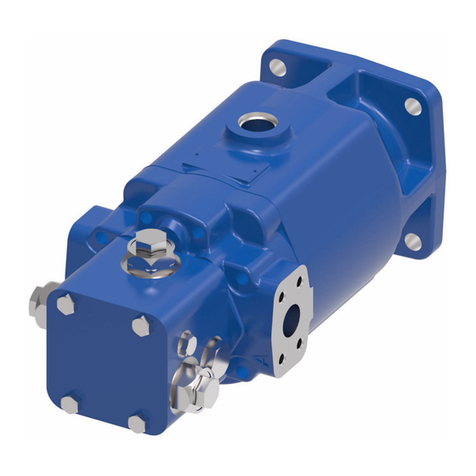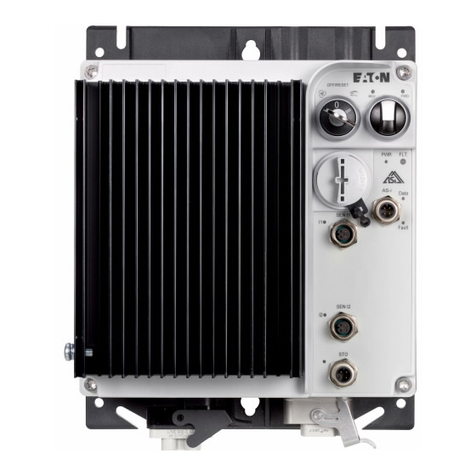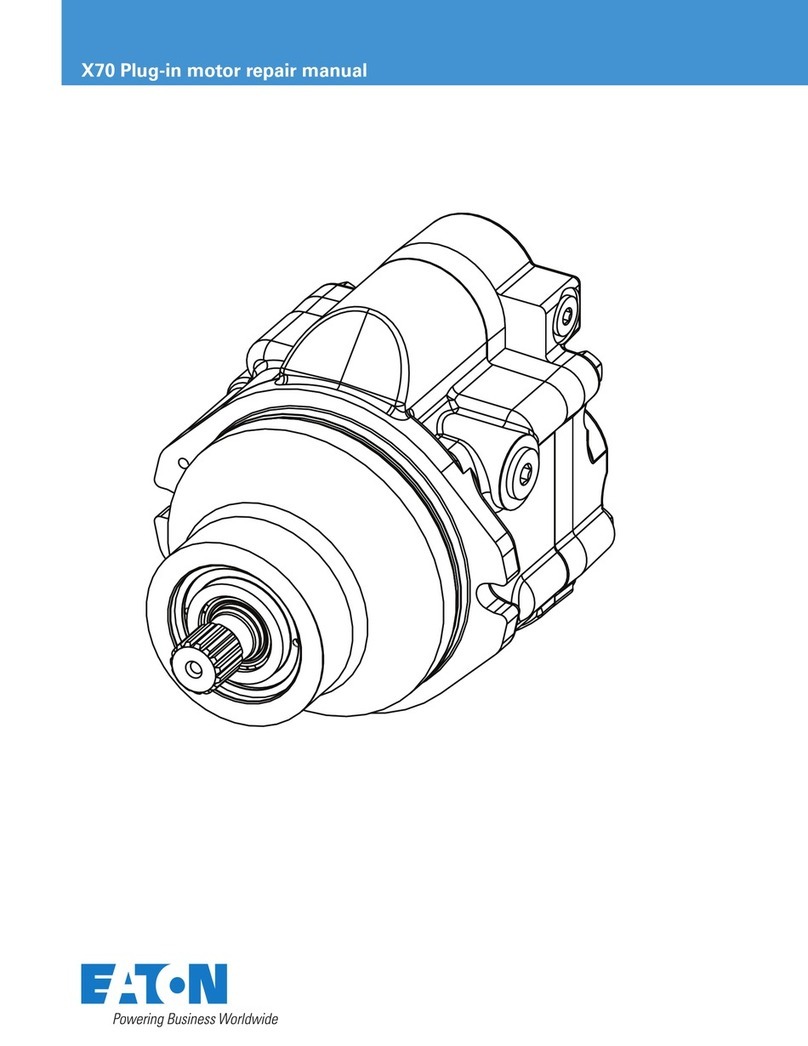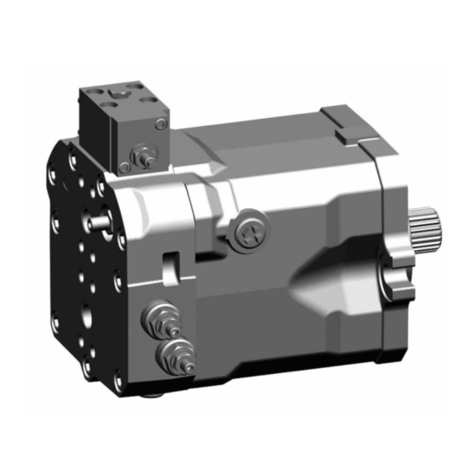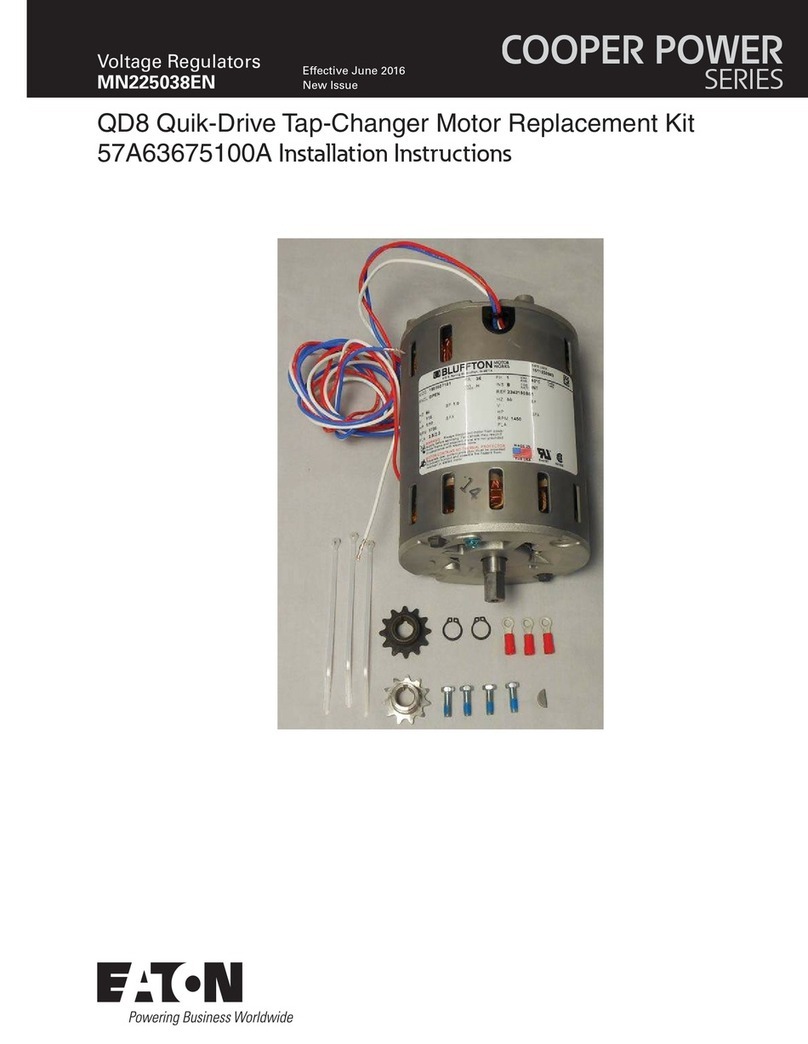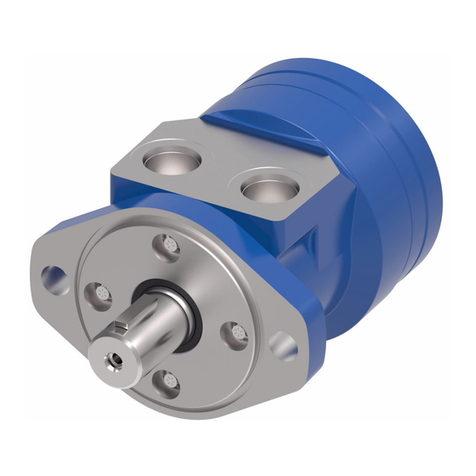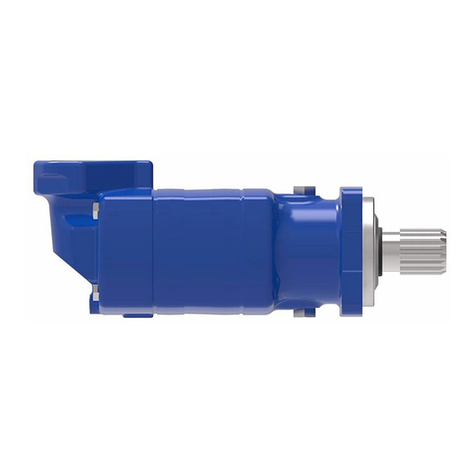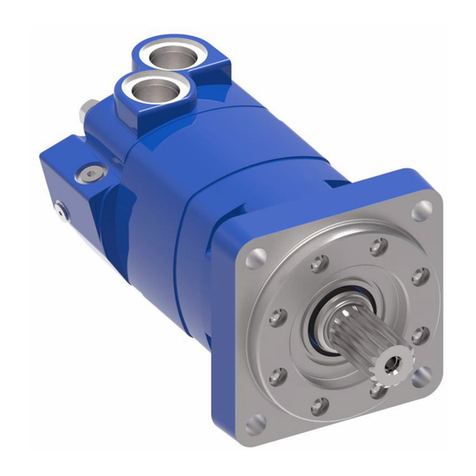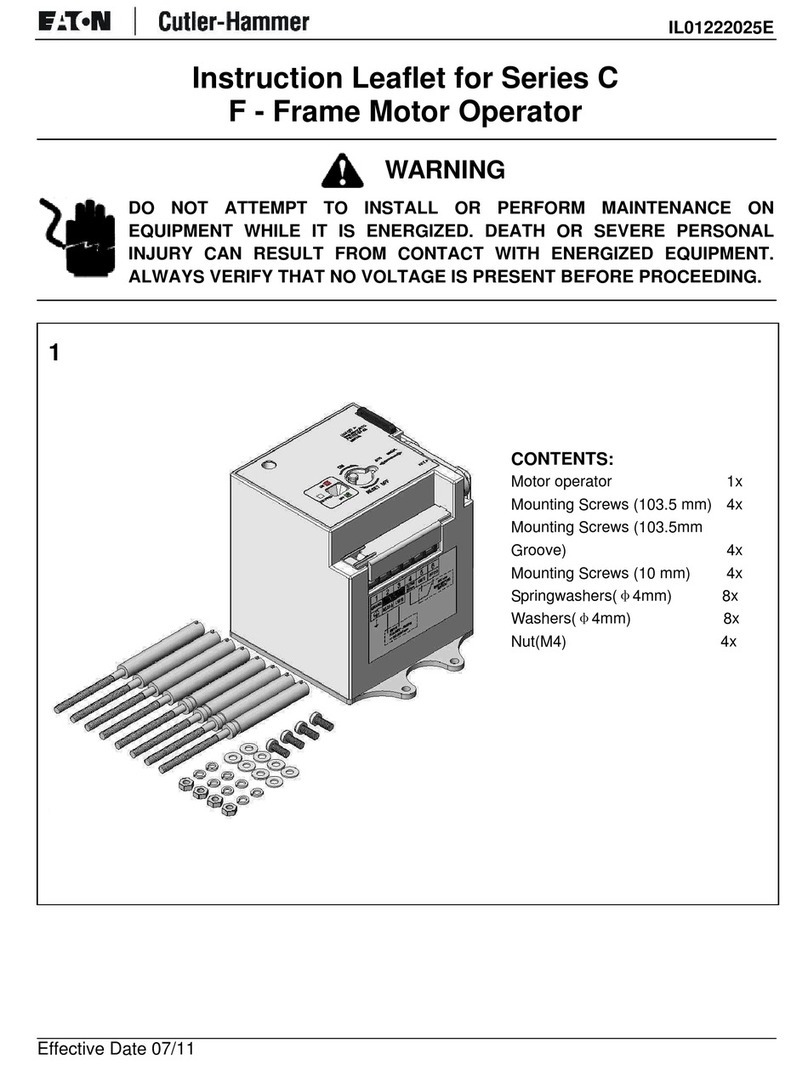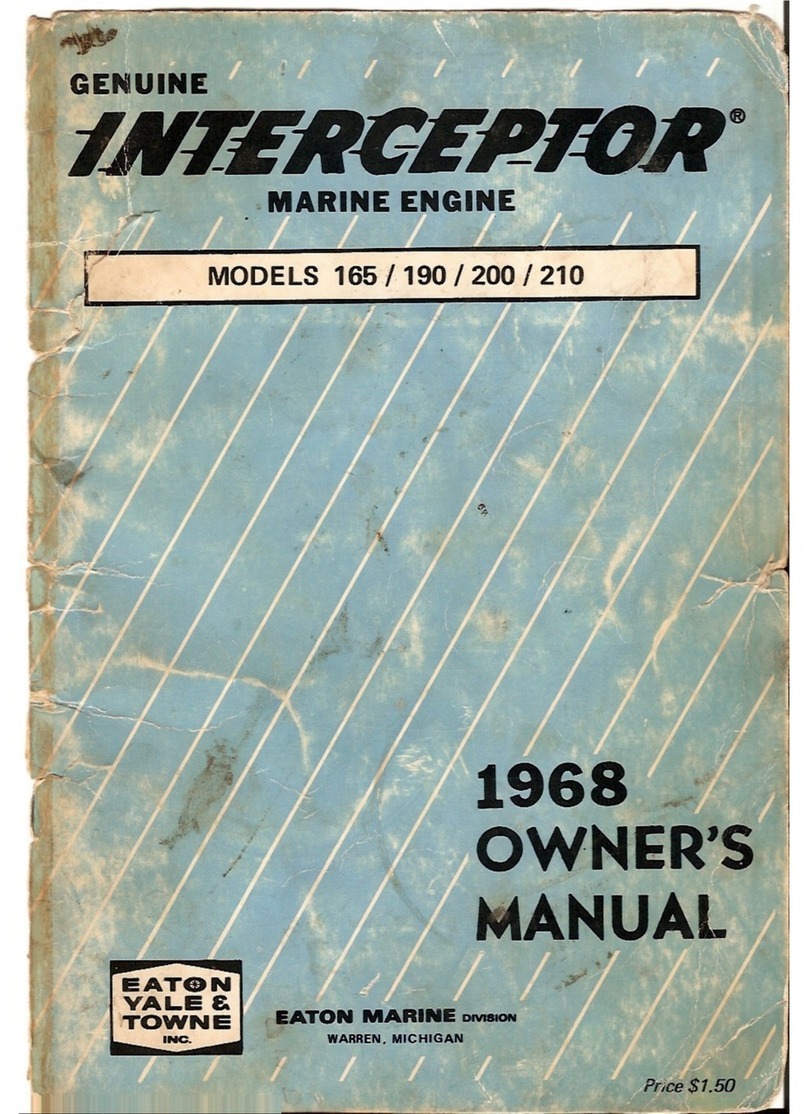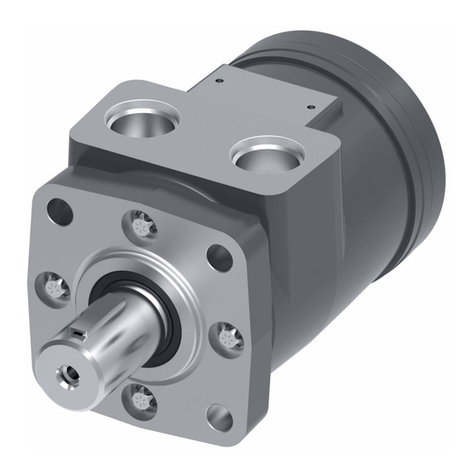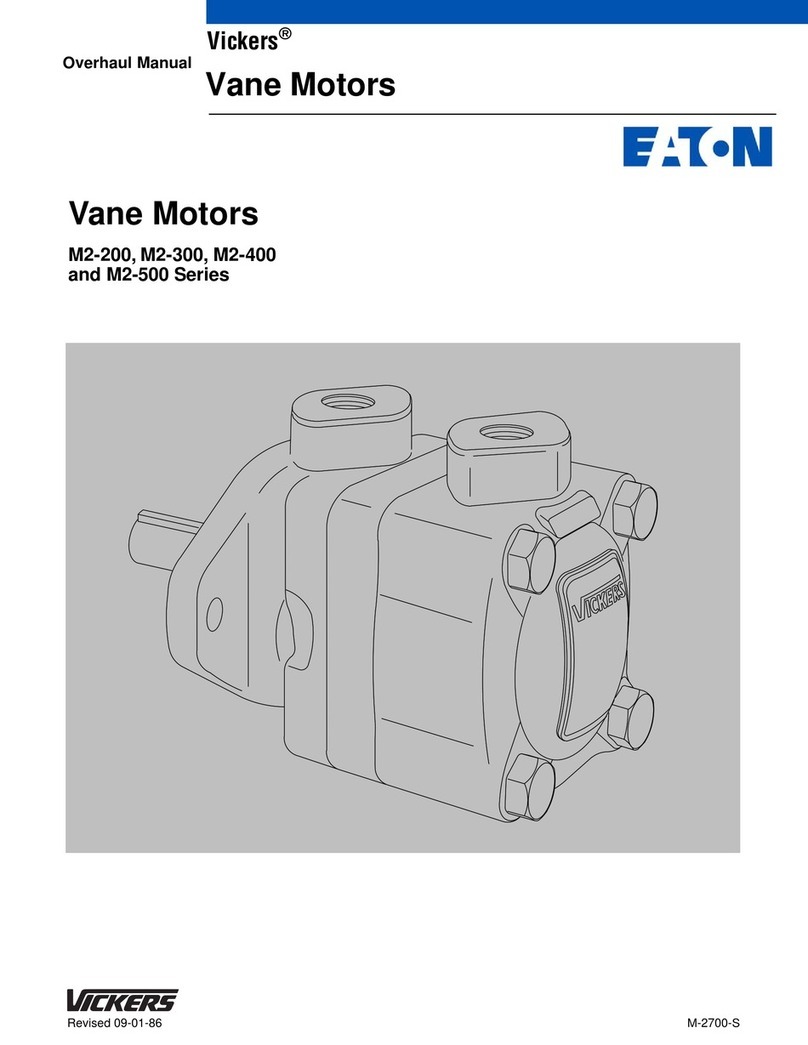
9
EATON Vane Motors M-2740-S June 2011
Piping and Tubing
1. All pipes fittings, hose and tubing must be thoroughly
cleaned before installation. Recommended methods of
cleaning are sandblasting, wirebrushing and pickling.
NOTE: For instructions on pickling, refer to instruction sheet
1221-S.
2. To minimize flow resistance and the possibility of leakage,
use only as many fittings and connections as necessary
for proper installation.
3. The number of bends in hydraulic lines should be kept to
a minimum to prevent excessive turbulence and friction
of oil flow and to minimize pressure drop in the lines.
Tubing must not be bent too sharply. The recommended
radius for bends is three times the inside diameter of the
tube.
Hydraulic Fluid Recommendations
General Data
Oil in a hydraulic system performs the dual function of
lubrication and transmission of power. It constitutes a vital
factor in a hydraulic system and careful selection of it should
be made with the assistance of a reputable supplier. Proper
selection of oil assures satisfactory life and operation of
system components with particular emphasis on hydraulic
motors. Any oil selected for use with motors is acceptable
for use with valves or pumps.
Data sheets for oil selection are available from Vickers
Technical Publications, Troy, Michigan. Order data sheet
M-2950-S for mobile applications.
The oil recommendations noted in the data sheet are based
on our experience in industry as a hydraulic component
manufacturer.
Where special considerations indicate a need to depart from
the recommended oils or operating conditions, see your
Vickers representative.
Cleanliness
Clean fluid is the best insurance for long service life. To
insure your hydraulic system is clean, perform the following
steps.
1. Clean (flush) entire new system to remove paint, metal
chips, welding shot, etc.
2. Filter each change of oil to prevent introduction of
contaminants into the system.
3. Provide continuous oil filtration to remove sludge and
products of wear and corrosion generated during the life
of the system.
4. Provide continuous protection of system from entry of
airborne contamination, by sealing the system and/or by
proper filtration of the air.
5. Proper oil filling and servicing of filters, breathers,
reservoirs, etc., cannot be overemphasized.
6. Good system and reservoir design will insure that aeration
of the oil is kept to a minimum.
Sound Level
Noise is indirectly affected by the fluid selection, but the
condition of the fluid is of paramount importance in obtaining
optimum reduction of system sound levels.
Some of the major factors affecting fluid conditions that
cause the loudest noises in a hydraulic system are:
1. Very high viscosities at start-up temperatures can cause
motor noises due to cavitation.
2. Running with a moderately high viscosity fluid will slow
the release of entrained air. The fluid will not be
completely purged of such air in the time it remains in the
reservoir and air will be recycled through the system.
3. Aerated fluid can also be caused by ingestion of air
through the pipe joints of inlet lines, high velocity
discharge lines, cylinder rod packings, or by fluid
discharging above the fluid level in the reservoir. Air in the
fluid causes a noise similar to cavitation.
4. Contaminated fluids can cause excessive wear of internal
motor parts, which may result in increased sound levels.
Overload Protection
A relief valve must be installed in the system to limit
pressure to a prescribed maximum. This protects the
system components from excessive pressure. The setting
of the relief valve depends on the work requirements of the
system and the maximum pressure ratings of the system
components. The relief protection must be designed to
prevent any hydraulic surge pressure, whether applied to
or generated by the motor, from exceeding the maximum
pressure rating of the motor.
In the event of an overrunning load, the motor may be driven
as a pump. If such a condition occurs, provision must be
made in the circuit to supply the motor enough hydraulic fluid
to prevent cavitation.
Drain Connection
Drain passages are provided in the motor to carry internal
leakage to a drain port in the cover. Never operate the motor
unless the drain port is connected to the reservoir. Pressure
in the drain line must not be more than 30 psi to avoid
internal damage.
